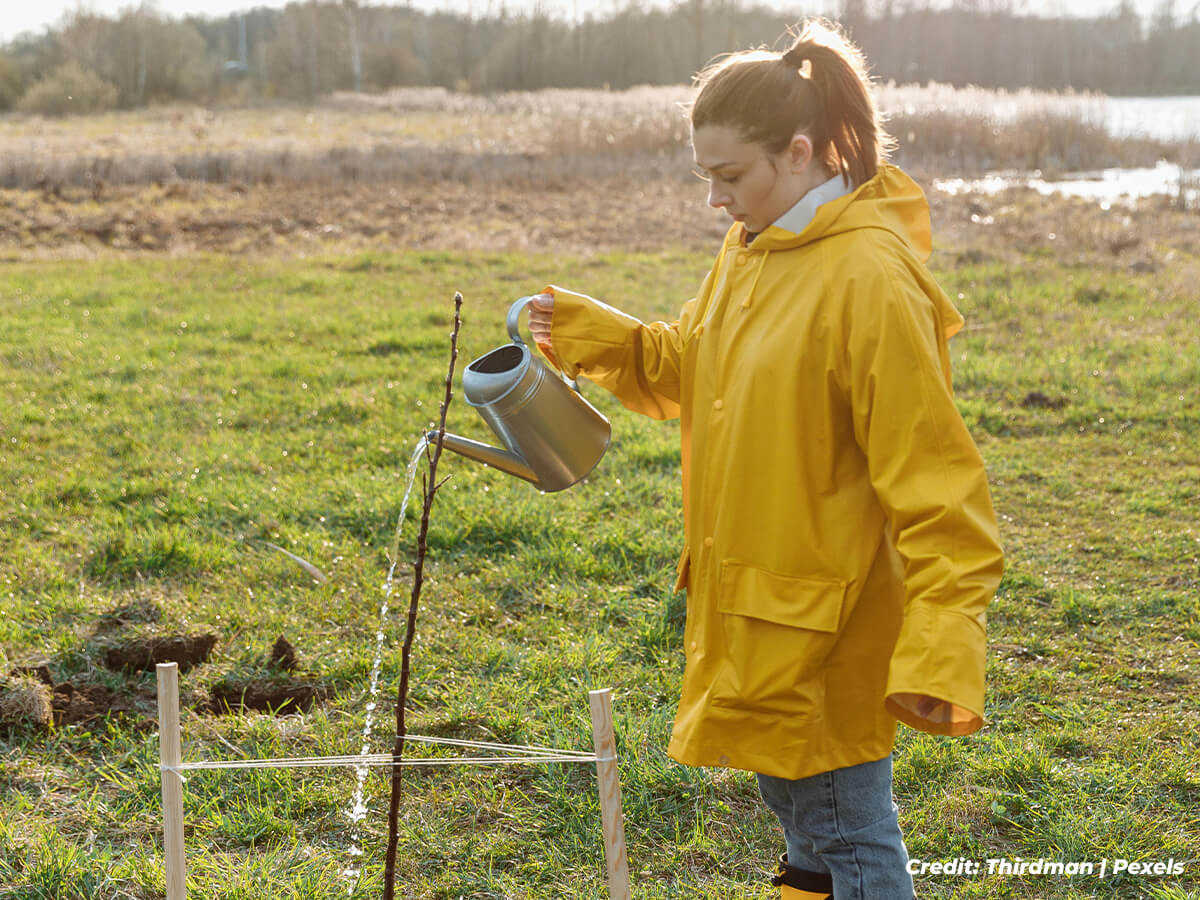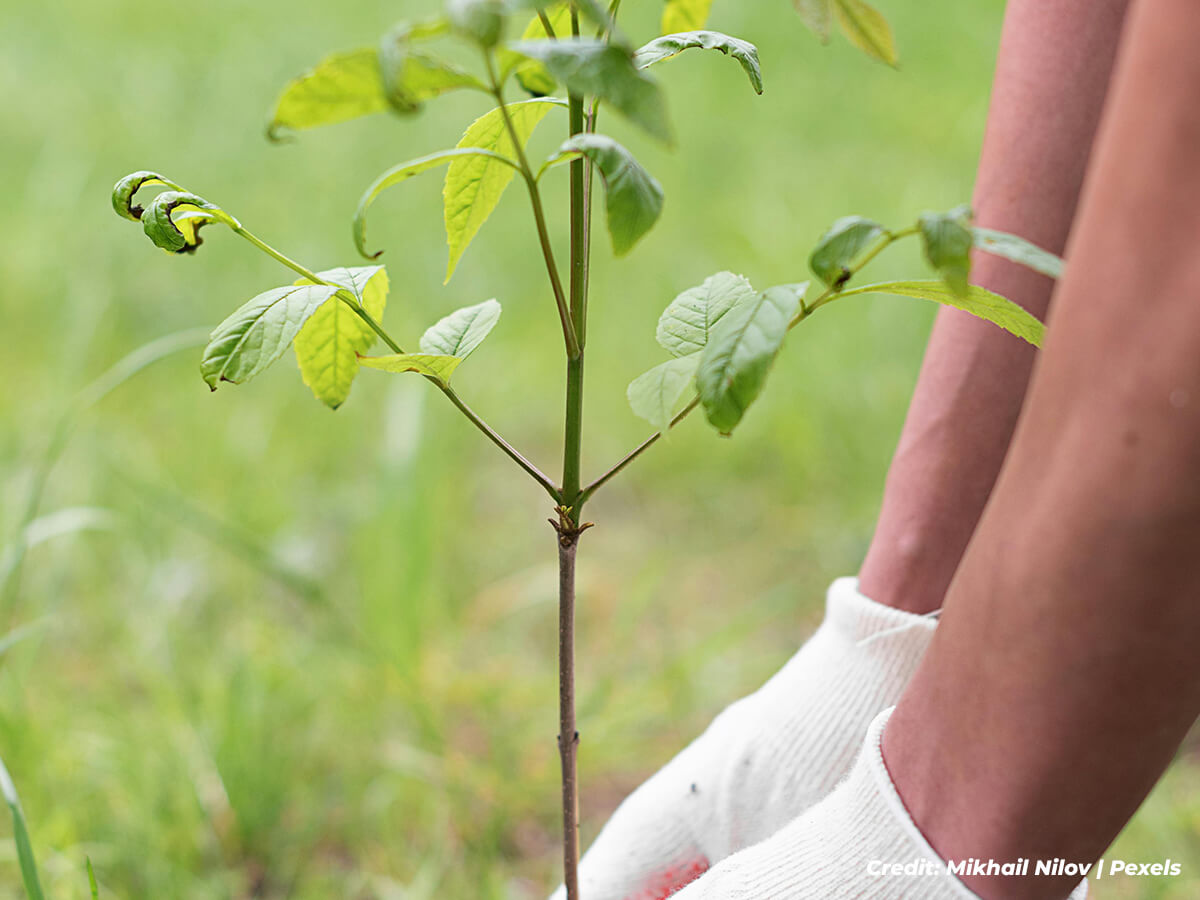For many, the act of planting a tree is a simple one: just dig a hole, drop in your sapling, and call it a day, your new tree is planted. While the initial act of planting is fundamental (especially if you want your tree to thrive in its new home), true arboricultural success takes quite a bit more effort than setting your tree in place or selecting native tree species adapted to local conditions. Thriving trees in your landscape are the result of thoughtful planning, ongoing care, and a deep understanding of their biological needs.
In this article, we look into a handful of effective strategies that can help you give your tree a headstart to flourishing on your property. Planting your tree doesn’t need to be a chore and nothing else. With a little care, you can take steps to ensure your tree has a successful start, and helping it flourish for years to come.
1. Site Selection: The Unseen Foundation
Like many other tasks, planting your tree doesn’t actually start with the planting. A crucial, yet often overlooked, aspect of tree planting is taking the time to carefully and meticulously select the site. A tree’s long-term health is intrinsically linked to the environment it inhabits, and so it pays to find a space that can comfortably house your tree. Consider the mature size of the species you intend to plant – its canopy spread, root system, and overall height. Many landscapes suffer from trees being planted too close to structures, driveways, or utility lines, leading to costly problems down the road. Research the specific light requirements of your chosen tree; does it prefer full sun, partial shade, or deep shade? Understanding its light needs ensures adequate photosynthesis, the process by which trees convert sunlight into energy.
Beyond light, assess soil conditions. While a perfect soil profile is rare, understanding your soil’s composition – whether it’s predominantly clay, sand, or loam – is paramount. Clay soils drain slowly and can become waterlogged, potentially leading to root rot. Sandy soils, conversely, drain rapidly and may not retain enough moisture or nutrients. Loamy soils, a balanced mix of sand, silt, and clay, are generally ideal. You can improve soil quality by incorporating organic matter, such as compost, which enhances drainage in heavy soils and improves water retention in sandy soils. Furthermore, be mindful of prevailing winds, especially for taller or more delicate species. Strong, constant winds can desiccate leaves, stunt growth, and even physically damage branches. Protecting young trees from strong winds, perhaps with temporary shelters, can significantly aid their establishment.
2. Proper Planting Techniques: More Than Just a Hole
While the “hole” is just the beginning, its proper preparation is vital. Dig a hole that is two to three times wider than the root ball, but no deeper than the root ball itself. The goal is to provide ample disturbed soil for lateral root growth without burying the root collar, the critical transition zone where the trunk meets the roots. The root collar should be at or slightly above ground level once the tree is planted. Burying it can lead to bark decay, girdling roots, and eventual tree decline. Gently tease apart any circling roots on the root ball before placing the tree in the hole. Circling roots, if left unaddressed, will continue to grow in a restrictive pattern, eventually choking the tree’s vascular system.
Backfill the hole with the original soil, avoiding the temptation to amend it heavily with rich topsoil or excessive compost. While some organic matter is beneficial, creating a “pot-in-a-hole” scenario can discourage roots from extending into the surrounding native soil, leading to a restricted root system and a less stable tree. Lightly tamp the soil around the root ball to remove large air pockets, but avoid compacting it excessively. Water thoroughly immediately after planting to settle the soil and eliminate remaining air pockets.
3. Initial Establishment Care: The Critical First Year
The first year after planting is the most critical for a tree’s long-term survival. During this period, the tree is expending significant energy establishing its root system in its new environment. Consistent and adequate watering is paramount. Young trees have limited root systems and are highly susceptible to drought stress. Deep watering is a boon for young trees; this method ensures that water seeps into the soil, encouraging the tree to grow deep roots anchoring it to the ground. This widespread root network also helps your tree to become more drought-resistant (which may be a beneficial factor in certain parts of Canada). Water deeply and regularly, especially during dry periods, ensuring the entire root ball is moistened. The frequency will depend on soil type, temperature, and rainfall, but a good rule of thumb is to check the soil moisture a few centimetres below the surface. If it feels dry, it’s time to water.
Mulching is another invaluable practice for young trees. Apply a 5 to 10 centimetre layer of organic mulch (materials such as shredded bark or wood chips are a good example) in a around the base of the tree. Set up the mulch in a donut patter, and extend it outwards toward the drip line. Avoid piling your mulch directly against the tree’s trunk, as this can trap moisture and encourage disease and pest problems. Mulch helps retain soil moisture, suppresses weeds that compete for water and nutrients, moderates soil temperature, and slowly enriches the soil as it decomposes.
4. Ongoing Maintenance: A Long-Term Commitment
As trees mature, their needs evolve, but ongoing maintenance remains essential for their continued health and vigour. Pruning is one such critical aspect of that ongoing tree care. Proper pruning promotes strong structure, removes dead or diseased branches, improves air circulation within the canopy, and can enhance aesthetic appeal. However, improper pruning can be detrimental, leading to decay, weakened structure, and even tree death. For significant pruning tasks, especially on mature trees, consulting a certified arborist is an absolute necessity for safeguarding your tree’s welfare. These professionals possess the knowledge and equipment to safely and effectively prune trees, adhering to best practices that prioritise tree health.
Regular inspections for pests and diseases are also crucial. Early detection allows for timely intervention, often preventing minor issues from escalating into major problems. Learn to recognise common pests and diseases in your region yourself and understand their symptoms to give yourself that early warning. Above all, however, a healthy tree with a robust immune system is more resilient to pest and disease pressures, which only serves to underscrore the importance of all the preceding strategies.

5. Water Management: The Lifeblood of Trees
Water is the most critical resource for tree survival and growth. While initial watering focuses on establishment, ongoing water management is vital, especially during prolonged dry spells. Mature trees, with their extensive root systems, are generally more resilient to short periods of drought, but even they can suffer significant stress. Whatever the age of your tree, deep, infrequent watering is generally more beneficial than shallow, frequent watering. Consider installing a slow-release irrigation system or using soaker hoses to deliver water directly to the root zone, minimising waste through evaporation.
Understanding the specific water needs of your tree species is also important. Some trees are naturally more drought-tolerant than others, while others require consistent moisture. Observe your trees for signs of water stress, such as wilting, yellowing leaves, or premature leaf drop.

6. Soil Health: The Invisible Ecosystem
Beyond initial soil preparation, maintaining long-term soil health is paramount. Soil is a complex living ecosystem teeming with microorganisms, fungi, and invertebrates that play vital roles in nutrient cycling and root health. Avoid excessive soil compaction around the base of trees, as this can restrict root growth and reduce oxygen availability. Limit foot traffic, vehicle parking, and construction activities within the tree’s drip line.
Regularly replenish the organic mulch layer to continuously enrich the soil with decomposed matter. Consider incorporating a slow-release, balanced fertilizer if soil tests indicate nutrient deficiencies, but avoid over-fertilising, which can harm root systems and lead to excessive, weak growth. A healthy soil environment promotes a strong, extensive root system, which is the anchor and lifeline of any thriving tree.
There’s more to proper planting of a tree than simply digging a hole and installing your sapling. By embracing these strategies, you’re doing more to set up your tree to take root and thrive in the environment you’re introducing it to. Each step, from careful site selection to ongoing soil and water management, contributes to the longevity, beauty, and ecological benefits that mature trees generously provide. With a little effort, you’ll be ready to tackle planting your trees properly and safely, whether you’re planting your first tree or installing a new one.
Your trees are an investment, and so it pays to have some professional support to help you care for them properly. Dave Lund Tree Service has a wealth of experience working with clients just like you. We provide full arborist services to help with your tree care. Whether you need professional pruning done, or you’re planting a tree, we’re more than happy to lend a hand and help you care for your trees. Call us now at (905) 775-1020 and give your trees some TLC.

